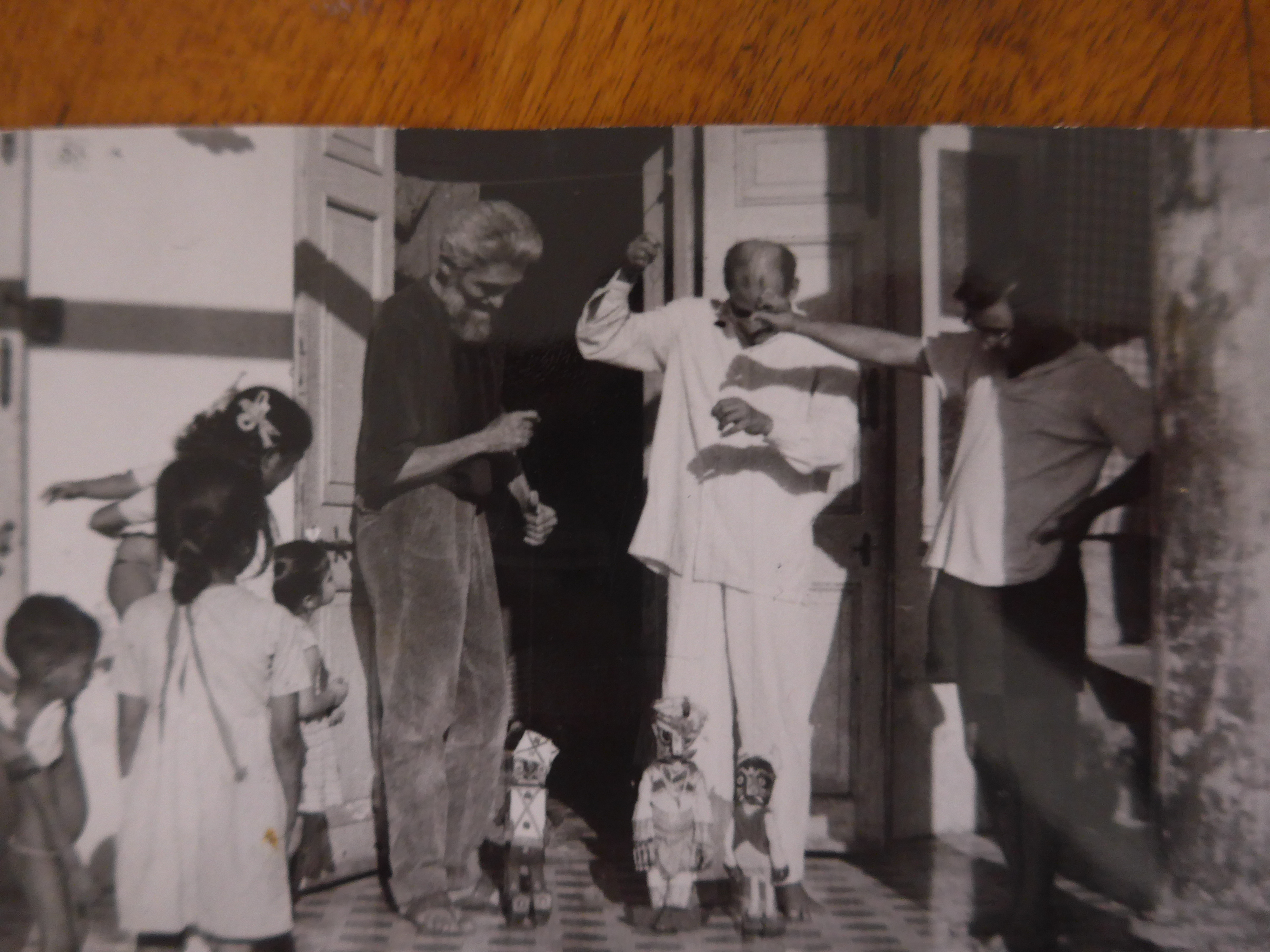Archive
Khelaghar
- Theatre
Khelaghar
- Puppet Theatre
- 1957
Ruby Terrace, Kurla Road, Andheri, 96 AS Bombay (now Dadabhai Cross Rd Number 3, Navpada, Irla, Vile Parle West, Mumbai)(residence).
The friendship between František Salaba and Chittaprosad Bhattacharya (1915–1978), that developed in the 1950s, was based on their common enthusiasm for theater and puppet plays.
Word Count: 25

Photograph by M. Krása, as inscribed on the back, we see Chittaprosad in the middle and M. F. Husain on the left outside Ruby Terrace animating puppets, Bombay, n.d. (Courtesy of Mrs. Helena Bonušová and the Krása family). Mallik, Sanjoy Kumar. Chittaprosad: A Retrospective 1915–1978, vol. 1 and 2, exh. cat. Delhi Art Gallery, New Delhi, 2011.
Sunderason, Sanjukta. Partisan Aesthetics: Modern Art and India’s Long Decolonization (South Asia in Motion). Stanford University Press, 2020.
Wille, Simone. “A Transnational Socialist Solidarity: Chittaprosad’s Prague Connection.” Modernism in Migration, special issue of Stedelijk Studies, no. 9, Fall 2019, n.p., https://stedelijkstudies.com/journal/a-transnational-socialist-solidarity-chittaprosads-prague-connection/. Accessed 15 March 2021.
Wille, Simone. “Chittaprosad’s Linocut Prints at the National Gallery Prague: Understanding Indo-Czech cultural Relations in the Postwar Era.” Bulletin of the National Gallery in Prague, vol. 30, 2020, pp. 6–21, https://ngp-prod.brainz.cz/storage/3403/NGBULL2020_web.pdf. Accessed 15 March 2021.
Word Count: 100
- Bombay
- Simone Wille. "Khelaghar." METROMOD Archive, 2021, https://archive.metromod.net/viewer.p/69/2951/object/5140-12041566, last modified: 08-09-2021.
-
Růžena KamathTranslatorCultural ManagerBombay
Růžena Kamath – originally from Czechoslovakia – has lived in Bombay since the late 1940s. There, she acted as a link between the artist Chittaprosad and his Prague friends.
Word Count: 28